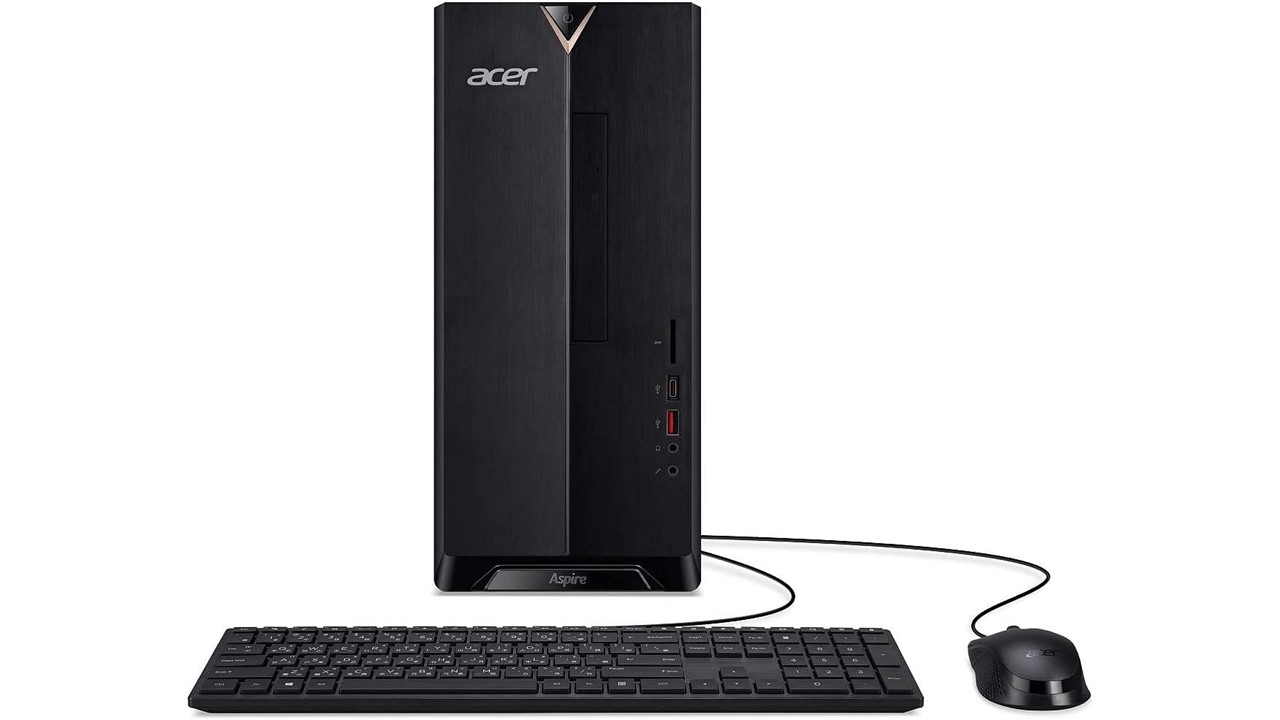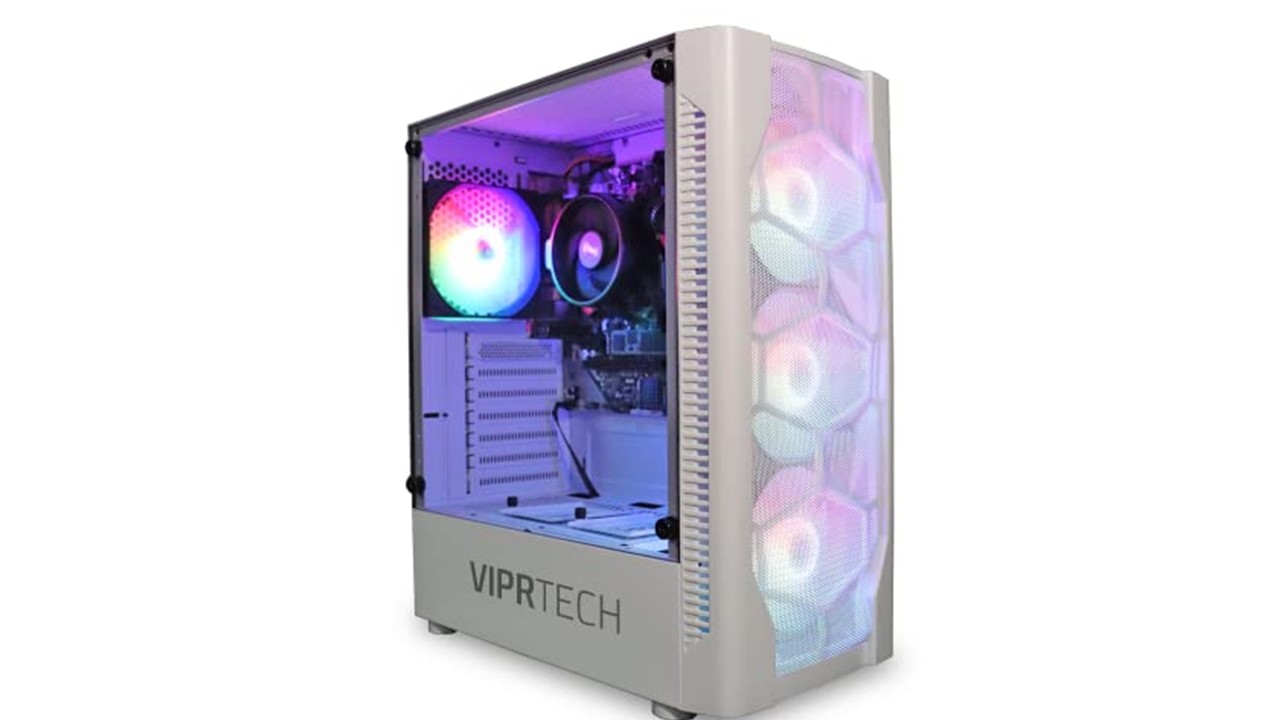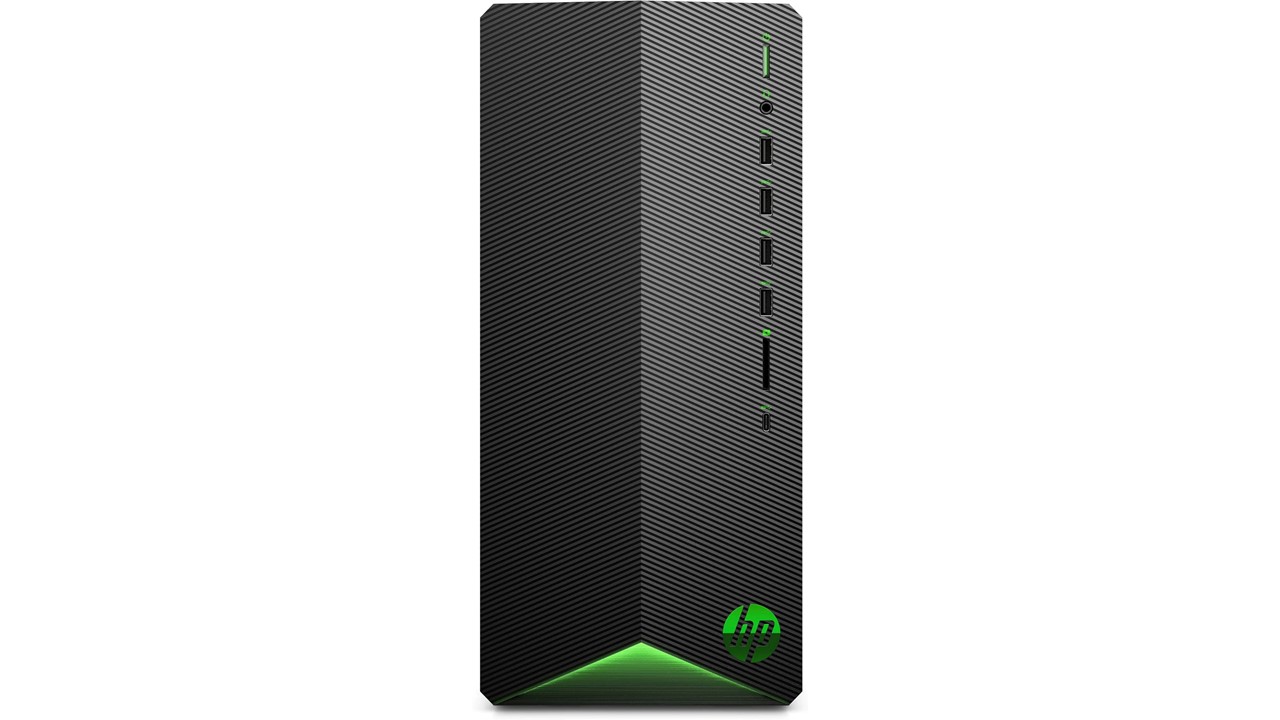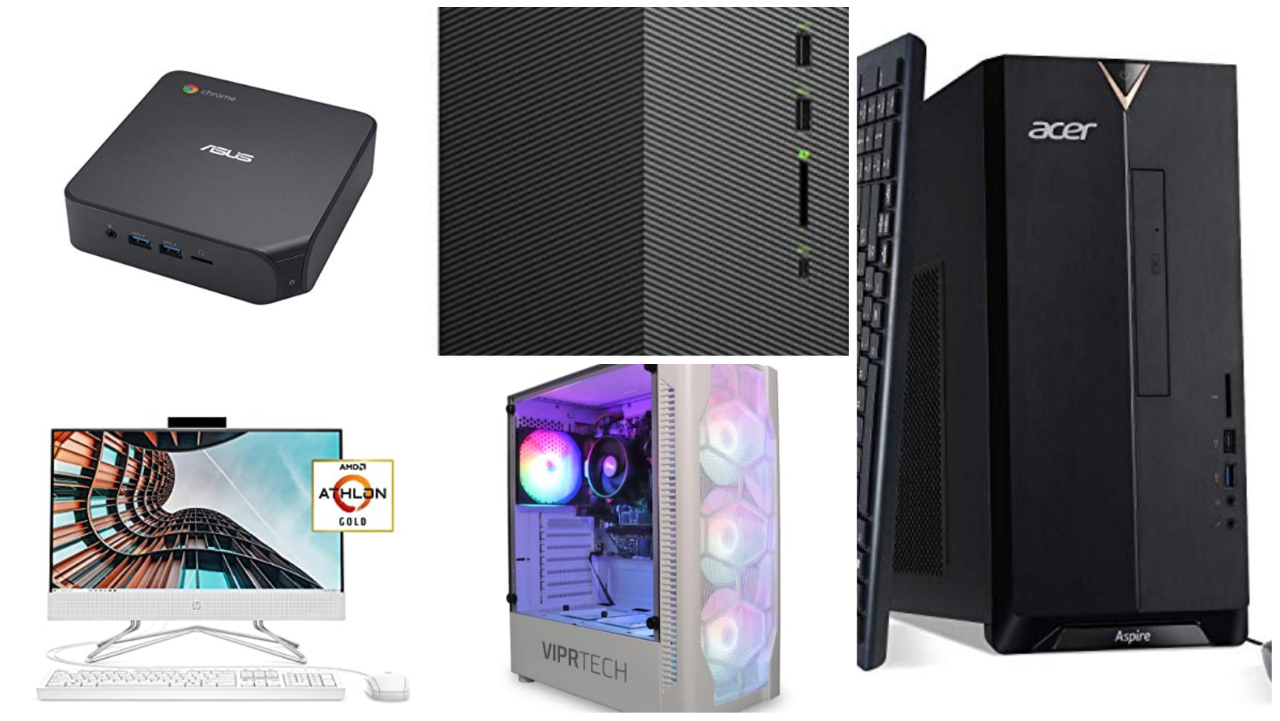Be it a child just 12-13 years of age, or a teenager about to step into adulthood, a computer is necessary for every teenager today. There are a lot of ways that they can use it, from studies to entertainment and learning new things every day.
This article is dedicated to providing you with 5 of the best desktop computers that are, as per us, the most attractive options available today for teenagers.
TOP PICKS
In This Article
Minimum & Recommended System Requirements for Desktops for Teenagers
There can be a lot of ways teens use their computers. While some have to study, assignments from school to finish, others use them for many casual usages.
The good thing is, none of these are too heavy on the system resources, but that also makes one confused about what configuration to choose.
So while a dual or quad-core processor is a minimum requirement for this purpose, the desktop also has to be equipped with ample memory, integrated or dedicated graphics and storage as needed.
So here are some of the specs that you can choose for a desktop for teenagers.
Minimum System Requirements: AMD Athlon Gold 3150U or better processor │ 4 GB or more RAM │ Integrated AMD Graphics │ 128 GB SSD or bigger storage drive
Recommended System Requirements: Ryzen 5 3500 or better processor │ 8 GB or more RAM │ Integrated Graphics or dedicated GPU like NVIDIA GTX 1650 Super │ 512 GB SSD
5 Best Desktops for Teenagers:
1. Acer Aspire TC-885-UA92 Desktop – Best Overall

Bottom Line: The Acer Aspire UA92 has all the good things that make it as good as any standard desktop to be used by a teenager. It provides all the advantages of a tower desktop with various configurations.
Key Features:
- Processor: Intel Core i5-10400
- Graphics: Integrated Graphics 630
- OS: Windows 10 Home
- RAM: 12 GB
- Storage: 512 GB SSD
Pros
- Impressive CPU performance
- Decent specs
- Good upgradability
Cons
- Integrated graphics only
- Limited wattage on the PSU
- Small space to work with inside the case
First on the list is a desktop that may not have a dedicated GPU or an excellent graphics performance, but it does offer you the provisions to add such.
There are multiple variants of the Acer Aspire TC-885-UA92 desktop and the one here is a mid-range performer.
The desktop thus comes with a 10th gen Core i5 processor, capable of reaching speeds up to 4.3 GHz.
There are 6 cores in this as well, meaning that multi-tasking and heavy workload by the teenager who uses it won’t be able to make it yield.
The graphics are integrated, with Intel’s Integrated UHD 630 being used.
There is 12 GB of RAM in it and along with it is 512 GB of SSD storage. You can increase either, as there are slots for both.
Not only that, there are free PCIe slots for graphics upgrades as well, which makes sure you can go ahead and buy a new GPU.
However, that would be possible only when you upgrade the PSU on this, as the 300 W wattage on it would hardly be able to support any decent GPU.
This isn’t a major concern but is something that would need some tending to.
Also, there are no RGB LEDs on the internals.
2. ViprTech Snowstorm Gaming Desktop – Runner Up

Bottom Line: This desktop is packed with very mid-range specifications with a decent price tag and is a good option for teenagers. The user can expect good processing speed from this PC and having a lot of useful features we have placed in the runner up position of our list.
Key Features:
- Processor: AMD Ryzen 3 2200G
- Graphics: AMD Radeon Vega 8 Graphics
- OS: Windows 10 Pro
- RAM: 8GB
- Storage: 128GB M.2 SSD and 500GB HDD
Pros
- Easily upgradable features
- Enabled with RGB lighting case
- WiFi-enabled
Cons
- Without optical drive support
- Cooling sections are not so strong.
- Some people have faced problem in the HDMI and VGA ports
The ViprTech Snowstorm desktop is an excellent choice for teenagers due to its cost-effectiveness, reliable performance, and design.
This desktop features a Ryzen 3 processor, which provides speedy performance for everyday tasks such as schoolwork and light gaming.
Additionally, the 8GB of RAM and 128GB of SSD helps the PC to deliver smooth processing and there is ample storage for storing important files and documents.
The graphics card also can handle some entry-level games and perform any graphics-intensive tasks.
Furthermore, the design of this desktop is ideal for teenagers who have limited space in their rooms.
In summary, the ViprTech Snowstorm desktop offers a great combination of affordability, performance, and convenience, making it one of the best options for teenagers.
3. HP Pavilion Gaming Desktop – Gaming and RGB Flair

Bottom Line: The HP Pavilion is a good entry-level gaming PC that you can provide your teenage child. It’s affordable, has decent specs, and can be upgraded when needed too, which makes it befitting for the current requirements.
Key Features:
- Processor: Ryzen 5 3500
- Graphics: NVIDIA GeForce 1650 Super
- OS: Windows 10 Home
- RAM: 8 GB
- Storage: 256 GB SSD
Pros
- Satisfying performance
- Good upgradability
- Small size
Cons
- Connectivity could have been improved
- Single RAM stick installed
- RAM frequency cannot be boosted through BIOS
The Pavilion Gaming PC is the next desktop on the list, much suitable for those teens that are looking for a desktop that can handle more than just the basic tasks related to school.
The most obvious purpose that comes to mind is gaming, but there are several other things that the desktop is capable of.
That can be photo or video editing, running some specific software that requires specs like these, and so on.
Talking about specs, the desktop has a Ryzen 5 3500 processor, which is a 6 core, 6 threaded chip. With turbo-boosting, its peak frequency is ample to provide a smooth experience.
Other than that, there is a GTX 1650 Super GPU with 4 GB of VRAM that makes most of the difference between the other desktops on the list, and this one.
There is 8 GB of RAM and a 256 GB SSD as well, and either of these can be expanded when needed.
While the desktop doesn’t have the latest standard or WIFI or Bluetooth, it has decent connectivity overall.
That consists of multiple USB ports, video ports, and such, and a USB Type-C port is present among them too.
4. HP 22 DF0022 AIO – Value for Money

Bottom Line: A sleek design, decent specs, private webcam and things such as these make this HP 22 inch AIO a worthy pick for your teenager. As long as major upgradability is not very important to you, of course.
Key Features:
- Processor: AMD Athlon Gold 3150U
- Graphics: AMD Radeon Vega Graphics
- OS: Windows 10
- RAM: 4 GB
- Storage: 256 GB SSD
Pros
- Stylish design
- Good cable management
- Decent display quality
Cons
- Limited upgradability
- Graphics upgrades are not possible
- A bit expensive than towers with similar specs
Tower desktops usually have better upgradability, easy repairs, and other features. However, they aren’t as good at some things like saving space and cable management.
This can be found only in an All-in-One desktop, and hence we have an alternative to the iMac here.
The HP 22 DF0022 AIO is a sleek desktop, and as suggested by its name consists of a 22-inch FHD display. The display has minimum bezels, making sure that whatever is being viewed on it doesn’t feel cramped up.
The specs of the AIO include an Athlon Gold 3150U processor, 4 GB of RAM, and a 256 GB storage drive.
There are two cores and 4 threads on the CPU so you may perform some simple multitasking on the computer.
The storage, although being an SSD would need some additional drives since its size is not the most suitable.
You may add external storage drives or a NvME SSD, whichever is convenient.
The RAM can also be upgraded, and since many teenagers would need fast responses, such will be necessary as well.
But that’s about it, as the desktop would not support any more major upgrades.
The graphics especially would be the same integrated solution throughout.
These disadvantages are what every AIO typically has, and it is thus up to you whether you can ignore these after judging them with the advantages being offered.
5. Asus ChromeBox 4 – Chrome OS PC that Fits on Your Palm

Bottom Line: Like previous ones from the brand, the ASUS Chromebox 4 has got a similar compact form factor, but comes with other added features as well. There are multiple configurations too, so that you may choose the one most fitting for a teenager.
Key Features:
- Processor: Intel Core i3-10110U
- Graphics: Integrated Intel UHD Graphics
- OS: Chrome OS
- RAM: 8 GB RAM
- Storage: 128 GB SSD
Pros
- Highly compact
- Supports three monitors at most
- Has a USB Type-C port
Cons
- Limited upgradability
- Not suitable for intensive tasks
- Small storage space
The final option on the list isn’t another AIO or tower desktop, rather it is the smallest desktop that can be carried around as well if needed.
The Asus Chromebox 4 may not be the best performer but has some features that no other desktops on this list do.
The primary of these is a small size, and yet it has all the necessary components needed, including a M.2 SSD. It is quite small in size though, with just 128 GB of space available.
But Chrome is a lightweight OS, so you have access to most of the space.
The processor present in it is a 10th gen mobile version of the Intel Core i3 with 2 cores, 2 threads, and a base clock rate of 2.10 GHz.
The tasks that you do on this can be document editing, media consumption, and such, relevant for a teenager.
As we said this isn’t the most impressive in the performance aspect but is good enough for the things that a teenage user can usually do on the Chrome OS.
The PC is 4K capable and has good connectivity as well. Apart from the standard USB 3.0 ports, there is also a USB Type-C port that can be used both for file transfers and powering up the Chromebox.
There are dedicated LAN ports, a micro SD card slot, two HDMI ports, and a headphone/microphone port, which is a complete set of the relevant connectivity that one needs.
How to Choose Best Desktops for Teenagers?

A teenager can use his/her desktop in a lot of ways, and hence a varied range of options are present to a buyer.
While this might make things easier when you go out to buy a computer, it also increases confusion about what specs would be the best.
For example, your child needs a desktop just for studies, finishing assignments at school, and so on, while another might also be interested in playing games or learning to edit.
You can always buy new desktops when and if newer needs arise, but that is not going to be very healthy for your bank account.
Given the requirements, it is thus clear that certain things must be taken into account, and based on your requirements you would find a budget range that suits you the most.
With lightweight desktops, such as one running on Chrome OS, serious specs are not necessary. But with Windows, you should not take chances.
Budget
The first and foremost thing to do for any parent here is to fix a budget. While the choice of the desktop would largely depend on the preferences you and your child have, it isn’t always possible to buy them exactly what they want.
To make sure your child is happy, and you need not compromise on savings, a budget is necessary first and foremost.
Any desktop can run the basic software and applications that a teenager needs at school, but for tasks like gaming or streaming, things start getting expensive.
Indeed, these work differently on mid-range specs when compared to high-end specs, and hence preferences play a big role.
In most cases, a PC with an entry-level GPU should be available within about $700, and with low graphics needs, a budget of $500 is plenty.
You can go higher or lower than this range too if you feel like it, but make sure that the investment you make lasts long.
OS
Now it is time to choose the Operating System of the desktop concerned as some of these can be useful for doing a specific kind of computing. You have three options, Windows OS, Chrome OS, and Mac OS.
The Windows OS, as you know, should be the best for your teenage kid no matter what age he/she is, or whatever software they intend to run.
Using it is fairly convenient and provides you with the necessary assistance for most mainstream tasks.
Next the Chrome OS, and although with less functionality than Windows, it is still a viable alternative in this instance.
The virus-free environment it offers, along with the Google Applications like Google docs, Gmail, and the Play Store can be of much use.
These should provide your children all they need regarding school, as well as entertainment in their free time.
One of the other advantages of the Chrome OS is that it is the most affordable option.
As for the Mac OS, it too is plenty useful but is more suited for professionals. The iMac desktops are usually much more expensive, and unless you have a budget of $1000+, finding one isn’t easy.
There is the Mac Mini now though, with the latest M1 microprocessor, that costs less.
Keeping price aside, a teenager may as well need the various functionality that it offers.
It is smooth, clean, and has certain advantages over Windows, and while some may prefer the Mac OS over Windows, others won’t.
Having said that, a teenager might just have an advantage with a Macbook, but that is up for discussion on some other day.
Processor
A desktop for the use of a teenager need not have a very expensive processor since the type of work they would be doing would not require anything like many cores or a superfast frequency.
For the average buyer, any modern dual-core option, from either AMD or Intel would do.
You can even have options from the Celeron or Pentium range or AMD’s Athlon series.
These are capable enough to handle all the daily work efficiently, but multitasking or the multi-threaded performance of these CPUs would not be very good.
With a slightly higher budget, you can have Intel Core or AMD Ryzen options that are better performers and future-proof.
These are usually the ideal choices for most, and a Core i3 or Ryzen 3 CPU would ensure that your kid wouldn’t need to stop playing music just to open an extra tab on Chrome.
For even better performance, quad-core CPUs should be great, and they can also handle low to mid-range gaming.
A core count higher than that would be needed only if the teenager does something intensive, say video editing.
Graphics
Next up is graphics, and even though a teenager might try to convince you about getting a top-notch GPU, as a parent you must know that isn’t necessary unless you want him to play video games for more hours than study.
For basic requirements and even light photo editing, the graphics that come with the processor or the integrated graphics is enough. Intel’s options are a bit overpowered by AMDs, but both are enough in this case.
For gaming, however, and we are talking about the type of games above Chess or such, a dedicated GPU might be necessary.
Entry-level options with 1 or 2 GB of video memory should be great, like NVIDIA’s GeForce GT 710.
But for more intensive games, more video memory and hence a better GPU would be needed. You can thus have a Radeon RX 570 or an even better RX 5500 XT (4 GB), both from AMD.
An NVIDIA option would be the GeForce GTX 1650 Super. There are even better options with 6 or 8 GB of VRAM, but those may not be necessary for the use of a teenager.
But, what if your kid needs to have a dedicated gaming or streaming setup?
Well, you can always buy a PC with integrated graphics initially, but free PCIe slots as well so that a GPU can be added later on.
RAM
You might keep a low-end GPU to keep your teenage child’s focus on more important things, but we would not insist so regarding system memory.
The desktop has to be equipped with a decent amount of RAM so that whatever it runs, it can do so quickly.
Having ample RAM won’t just mean that the system runs well, it also means that there won’t be any issues when it is put under the workload. A slow system is what everyone hates, irrespective of age, or profession.
So, 4-6 gigs of RAM is the minimum, even if you would be buying a Chromebox or a low-end desktop.
To be on the safer side, however, you might want to provide the PC with 8 GB of it so that it need not be upgraded anytime soon.
Any more than that would be necessary if you plan on gifting them with a gaming desktop.
RAM frequency is not so important here, and hence any average DDR4 RAM module is good.
We mention DDR4 here as that is what we would suggest to you over the slower and almost out-of-date DDR3 type of RAM.
Storage
One important thing that the PC should be provided with is a speedy and large enough storage drive so that it can read and write data quickly.
The amount of space needed largely depends on the user, but more storage is always beneficial.
With Windows, 256 GB of storage feels very low, but with the Chrome OS running, that can be more than enough, unless the teenager has very large files to store.
The size of the storage drive can always be upgraded, and hence its kind is more important.
Your child may not need lightning-fast responses, but you wouldn’t want him complaining just because a movie cannot be transferred from a USB drive fast enough.
Being faster than regular hard drives, SSDs are the better option here, but they don’t play with the budget very well.
With a very strict budget, a large SSD would not be available, but your PC may not have to use a single storage drive.
You may use a hard drive and an SSD, for the most storage and the most cost-effectiveness.
Connectivity
A large number of teenagers comprise students, who frequently have to connect different devices such as their smartphone, iPod, and flash storage with their PC.
For that to happen, the desktop must have various forms of connectivity present, both wired and wireless, so that they have no trouble doing so.
Wired connectivity includes USB ports, with USB Type-C ports being preferable.
Others like ports for headphones, speakers, Ethernet, and so on are also recommended, but these come standard with most computers now, so nothing to worry about.
On the Wireless side are WIFI, Bluetooth, and such that can make it easier to connect and reduce the trouble of managing cables.
With an Internet connection, these would allow your child to explore numerous new things on the desktop, while also doing needful tasks.
Upgradability
To wrap up the hardware section, all you need is decent upgradability. This would save your money when the need for a new desktop arises, while also making sure that the desktop you provided to a teen remains to be useful still.
General upgradability present in most desktops is related to RAM and storage, but SFFs and Mini PCs usually have a little limitation over storage drives and the number of RAM modules being added.
A full tower desktop, however, should allow the addition of more RAM or SATA storage without any issues.
The more serious upgrades, like Graphics, are possible with PCIe slots. Those can be also useful if you need NvME SSDs, which are even faster than the SATA kind.
If the desktop you choose doesn’t have WIFI or Bluetooth adapters present in it already, then PCIe for the former, and a 9pin USB for the latter would be needed.
Accessories
The final thing to add to the list is good accessories, which include a large enough monitor and sturdy peripherals.
You can buy mechanical keyboards which usually have RGB lighting along with crisper keys, which would let your child play or study even in the dark.
Not only the keyboard but the mouse as well as the cabinet you buy can have RGB lighting in them. Gaming desktops already come with RGB LEDs fitted in some of the components or the case itself, but adding those to a usual desktop is not very hard either.
This is simple, inexpensive customization that you may do to make the PC look interesting for a teenager, but isn’t always necessary.
Also needed are a pair of headphones and speakers, and a UPS may be, and that should be it to complete the setup.
Questions & Answers:
What desktop would be best for a 13-year-old?
The age is somewhat the beginning of teenage, so any desktop that is useful for a teenager would be good for a 13-year-old as well. What matters here is you choose a reliable and renowned brand for the computer so that it lasts long.
Should you buy your kid a Chromebox?
For the things kids or teenagers do, a Chromebox or any such computer can be a viable alternative. They are usually small in size, simple to use and the affordable pricing makes sure that you need not worry about budget when buying one.
Finishing up
The needs of teenagers are never-ending, they are interested in one thing today, and tomorrow might be inclined towards something else. Such kind of experimentation does help to gain experience, but they must be provided with the necessary resources. ‘
This article should be helpful to find you something that won’t have to be changed anytime soon, a good desktop.

